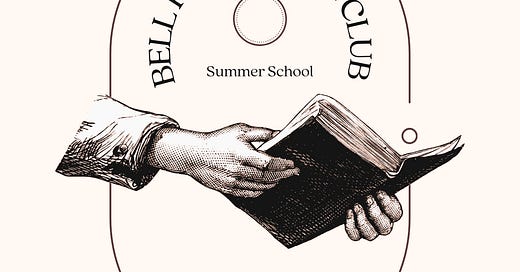Happy summer Friday, Bell Ringers! It’s the Summer of Knowledge, and I’m here with a recap of yesterday’s great inaugural meeting of The Bell Ringer Book Club. Thank you to everyone who attended and shared their thoughts on the book. More info, and the recording of yesterday’s discussion, below.
Catch up on the Summer of Knowledge:
And coming soon: what knowledge-building looks like in math; how writing can help; how to connect prior knowledge to new learning. Learn more.
Developing Curriculum for Deep Thinking, Part I
The first half of the book Developing Curriculum for Deep Thinking: The Knowledge Revival, by Tim Surma, Claudio Vanhees, Michiel Wils, Jasper Nijlunsing, Nuno Crato, John Hattie, Daniel Muijs, Elizabeth Rata, Dylan Wiliam and Paul A. Kirschner is an explanation of how the brain learns, a defense of why knowledge matters so much to learning (not only for academic achievement, but also for a just society) and how knowledge creates networks of understanding in the mind.
Book club attendees were both school and district leaders and classroom teachers, specializing in math, reading and history. They seemed to already have an understanding of how the mind learns and why knowledge is so important to learning—many said they had developed this understanding not from professional development or any kind of training, though. Most discovered it through teacher networks on the internet—places like Facebook and X (formerly Twitter), or when the ‘science of reading’ movement came to their district, they got curious and started searching online. They named scientists like Dan Willingham, professors and experts like Carl Hendrick and Paul Kirschner, and journalists like Natalie Wexler as introducing them to those ideas.
Next week’s meeting, which will take place on Thursday, June 19 at 4 pm Eastern Time, will cover the book’s second half, which is about how to develop knowledge networks through a curriculum. One thing we discussed yesterday is how hard it is for teachers to create the kind of cohesive, year-upon-year knowledge-building program on their own. A strong, well-designed curriculum makes all the difference.
Here’s the recording of the meeting—hope you will join us next week for the second half! It’s a short book, it’s not too late!




